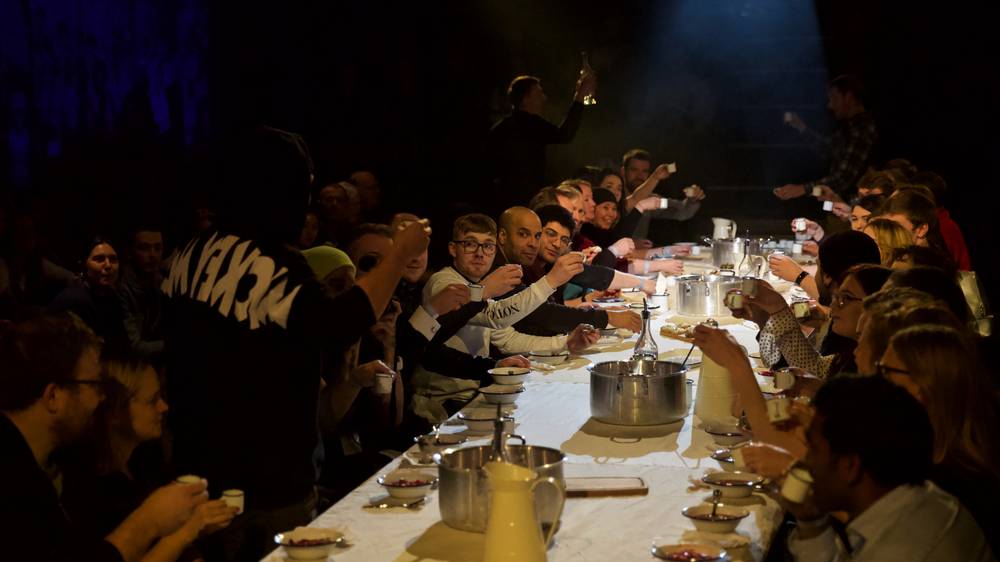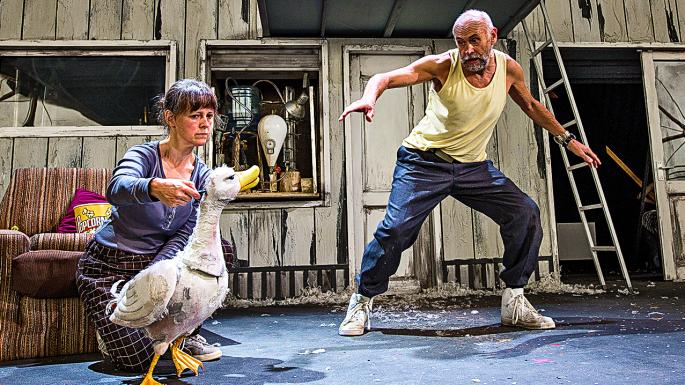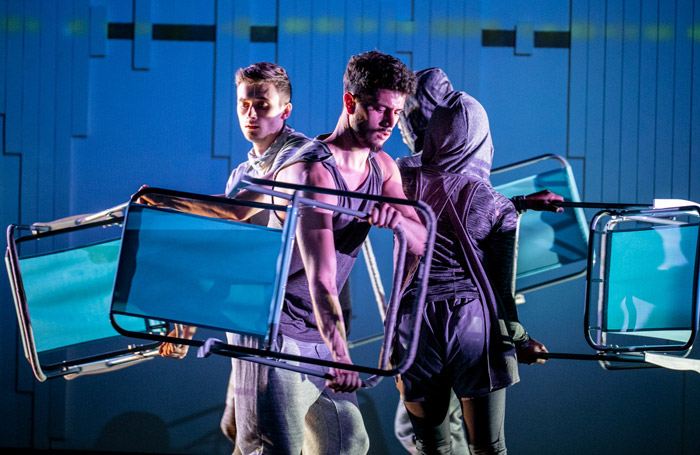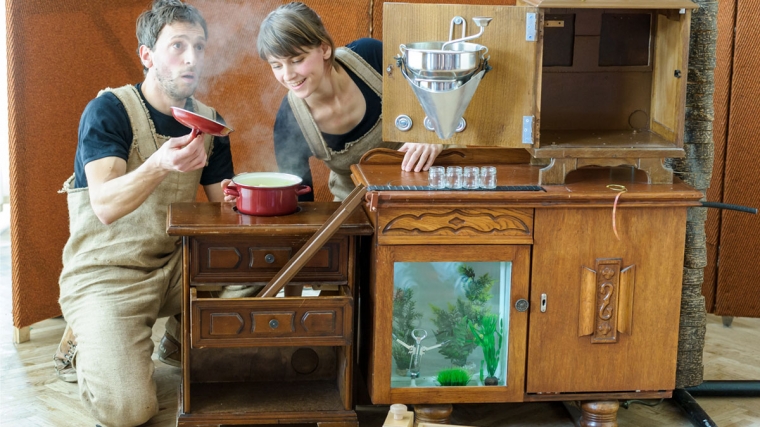In 2016 self-styled ‘guerilla folk opera’ Counting Sheep took Edinburgh Fringe by storm, as it invited audiences to immerse themselves in a passionately evoked music-driven staging of a revolution. Toronto-based Lemon Bucket Orkestra re-cast the personal experiences of their part-Ukrainian musician Mark Marczyk into vibrant folk form. Marczyk had found himself in the midst of the 2014 uprising in the country, against the volte face by their corrupt, pro-Russian president, Viktor Yanukovych to step away from closer ties to the EU that his citizens wanted. A brutally suppressed revolution followed and, as the final screens in the show’s giant projections that flank the playing area attest, the war is still ongoing.
Still relevant now, still vital work, but of course the world has turned since – and the EU project and the values it represents are under attack in the UK. This new presentation of Counting Sheep – re-conceived by the award-winning directors of Belarus Free Theatre, Natalia Kaliada and Nicolai Khalezin, and presented in London as the government attempts to push Brexit through – heightens the show’s focus on the uprising’s European ambitions. Its reworked form drapes tattered EU flags around the shoulders of the protestors, and talks explicitly about the values of the bloc that the revolution was fighting for. Most powerful and devastating is its foregrounding of the intersection between the personal and the political that has been a vital and misunderstood strand of the Brexit debate raging in the UK for the past two years.
Shifting from 2016’s wide angle, musical portrait of a host of players in the revolt – the variegation of myriad notes and harmonies on a score – this version focuses even more strongly on the single melodic line of the love affair between Canadian visitor Mark, drunk on the energy of revolution, and the concert pianist, Marichka Kudriavtseva, who he meets on the barricades. Intimate scenes of the moments that drive their individual journeys toward joining the protests, the romance, fear and passion that characterises their meeting and ensuing relationship, bring the bigger picture – its hopes, idealism and violence – into vibrant relief. Kaliada and Khalezin have made some brilliant choices about these moments for this production, not least some breathtaking choreography that can’t fail to lift the heart – and what they illuminate is the humanity of all who stand on the barricades, and the hopeful but imperfect choices that inevitably underpin bigger political actions.
The show retains many of the evocative, interactive fragments that build a rich and heartfelt portrait of Ukraine: we share simple regional food, we witness an iconic tango down the runway-like table; we join a wedding dance, partnering with strangers; we are marshalled to help move bricks and sandbags to build the barricades. What Belarus Free Theatre emphasise, though, is the physical, emotional reality of this moment. Everywhere, the texture of the real is placed trustingly in our hands: real exhilaration as the banging (less folksy; more electronic, bassy, punky) score soundtracks the early protests; the real connections with strangers whose hands we take to dance;and the heft and awkwardness of sandbags. These textures complement the real world portrayed in the video material that accompanies much of the show: found footage of the protests, flaming and raging; footage of the those sleeping on the barricades after 36 hours of non-stop protest; footage of the dead.
There is real grief here too, still so effectively rendered in the cracked voice of a violin, the falling note of a woman screaming her mourning. This is a powerfully moving reworking of the production which seems now, more than ever, not just to hold up the events of the Ukrainian Revolution to the light but to hold up all of the ways we must understand political events as the actions of frail, hopeful, loving, fallible human individuals.





